What Types of Sensors Are Best for Greenhouse Monitoring?
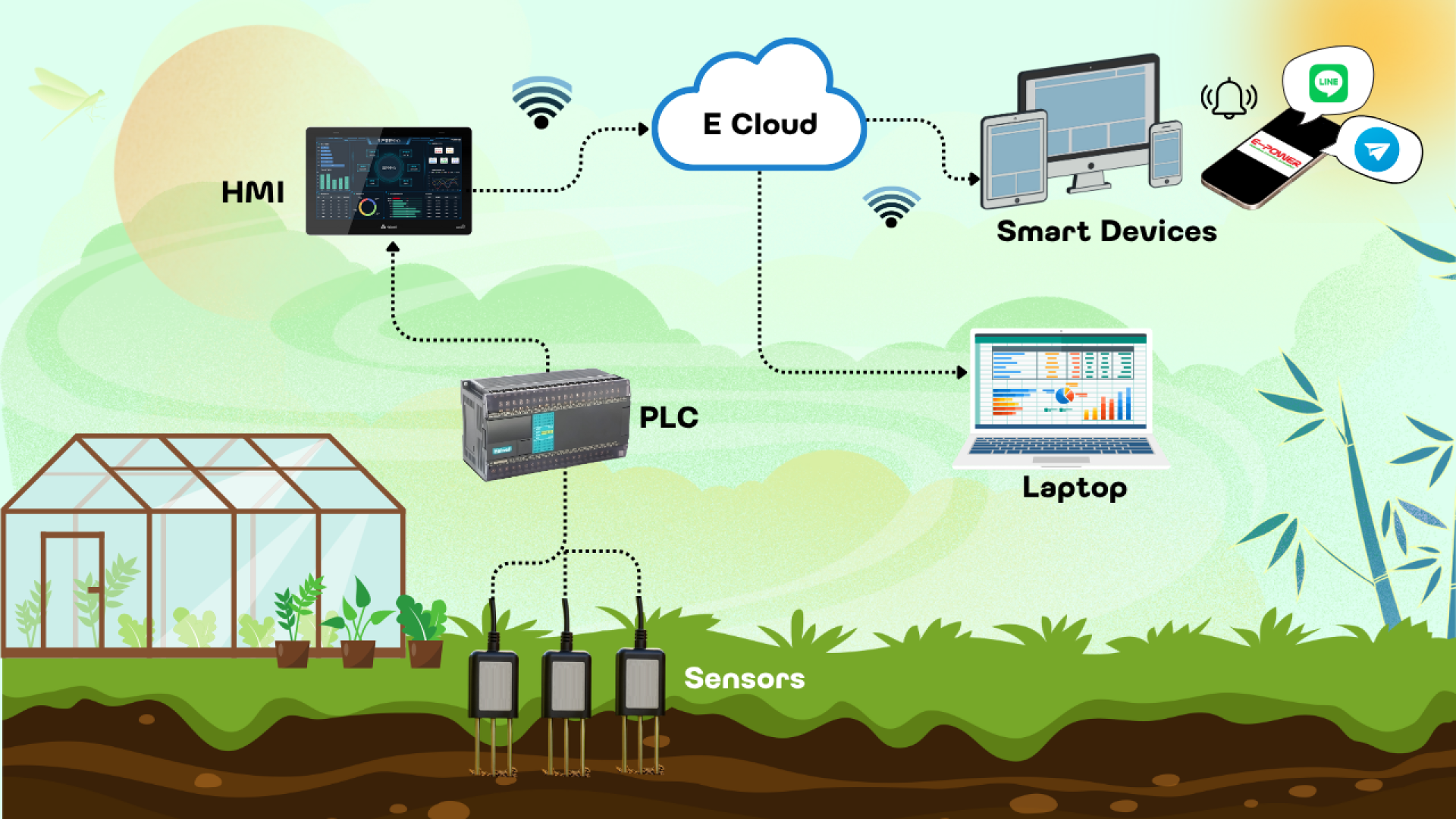
Which Type of Sensor is Best for Greenhouse Monitoring?
1. The Growing Need for Smart Greenhouse Monitoring
1.1 Modern Greenhouses and Crop Cultivation
A greenhouse is a modern agricultural solution: an enclosed structure made of transparent materials such as plastic or glass, designed to create a controlled environment for growing plants. Inside the greenhouse, sunlight is trapped, and the temperature is maintained at an optimal level for farming regardless of the outside weather.
In todays agriculture, greenhouses play a vital role because of their ability to control temperature and humidity, prevent pests and diseases, and maintain ideal soil conditions. They are especially suitable for high-demand crops such as tomatoes, cucumbers, leafy greens, flowers, and high-value herbs.
Greenhouses are particularly important for crops like tomatoes, cucumbers, lettuce, flowers, and herbs because they allow farmers to precisely control the growing environment.
1.2 How Technology Improves Greenhouse Conditions
How do we achieve the perfect environment in a greenhouse? Thanks to modern technology and the agricultural revolution, we now use advanced sensors to collect real-time data that allows us to control greenhouse conditions with high precision.
Sensors are installed in multiple locations within the greenhouse to monitor light intensity, carbon dioxide (CO) levels, soil moisture, temperature, and humidity. All these factors are essential for maintaining the ideal conditions that keep plants healthy and maximize yield.
Compared to traditional farmingwhich relies on manual observation and is prone to human errormodern IoT (Internet of Things) technology enables sensors not only to monitor conditions but also to make automated decisions, provide dashboards, and send alerts. As a result, agriculture has become smarter, more efficient, and less labor-intensive.
2. Key Environmental Factors for Plant Growth
2.1.1 Temperature
Just as the human body functions best at 37°C (98.6°F), each plant species has its own ideal temperature range for proper growth. For example, tomatoes thrive between 18°C and 27°C, while leafy greens like lettuce prefer cooler conditions around 15°C to 20°C.
Temperature directly affects photosynthesis, respiration, and overall plant growth, so it must be carefully controlled according to the specific crops needs.
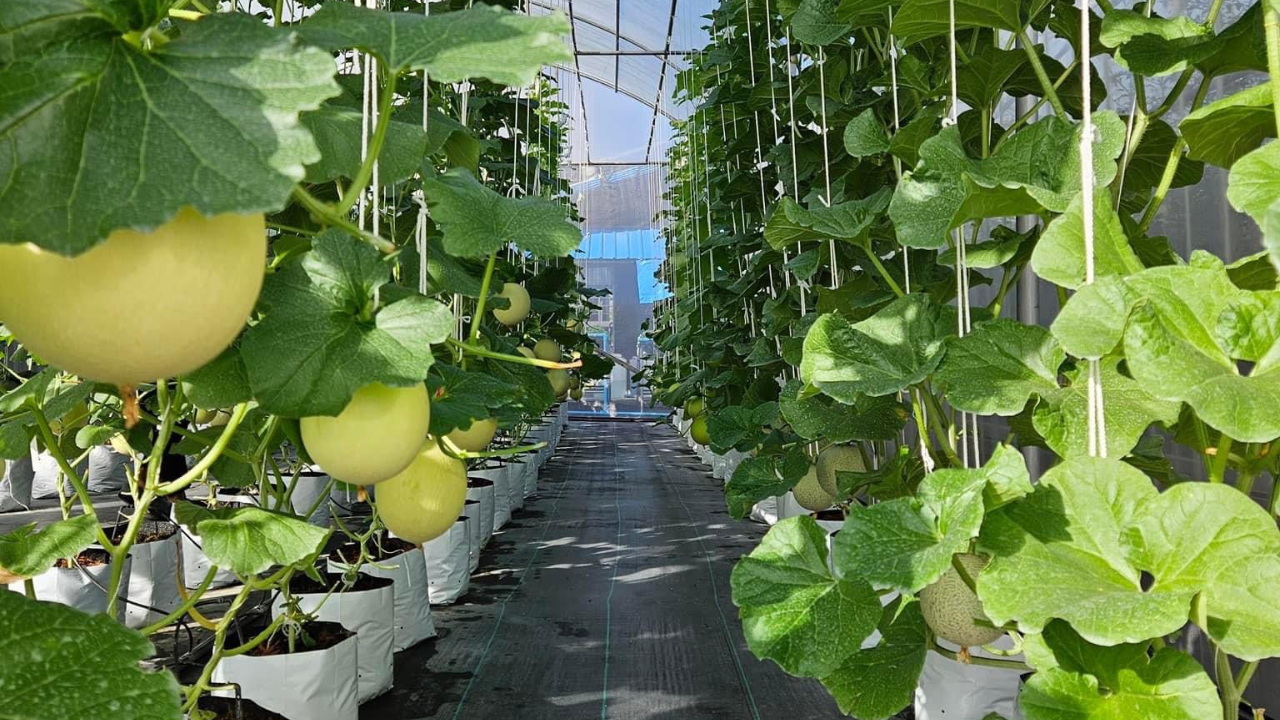
2.1.2 Humidity
Relative humidity plays an important role in greenhouses because it directly affects transpiration (the process where plants release water vapor through their leaves).
If humidity is too low, plants lose water too quickly, slowing their growth and photosynthesis.
If humidity is too high, water loss decreases, nutrient uptake slows down, and the risk of fungal diseases increases.
For most crops, the optimal humidity range is between 50%70%, but this may vary depending on the plant type.
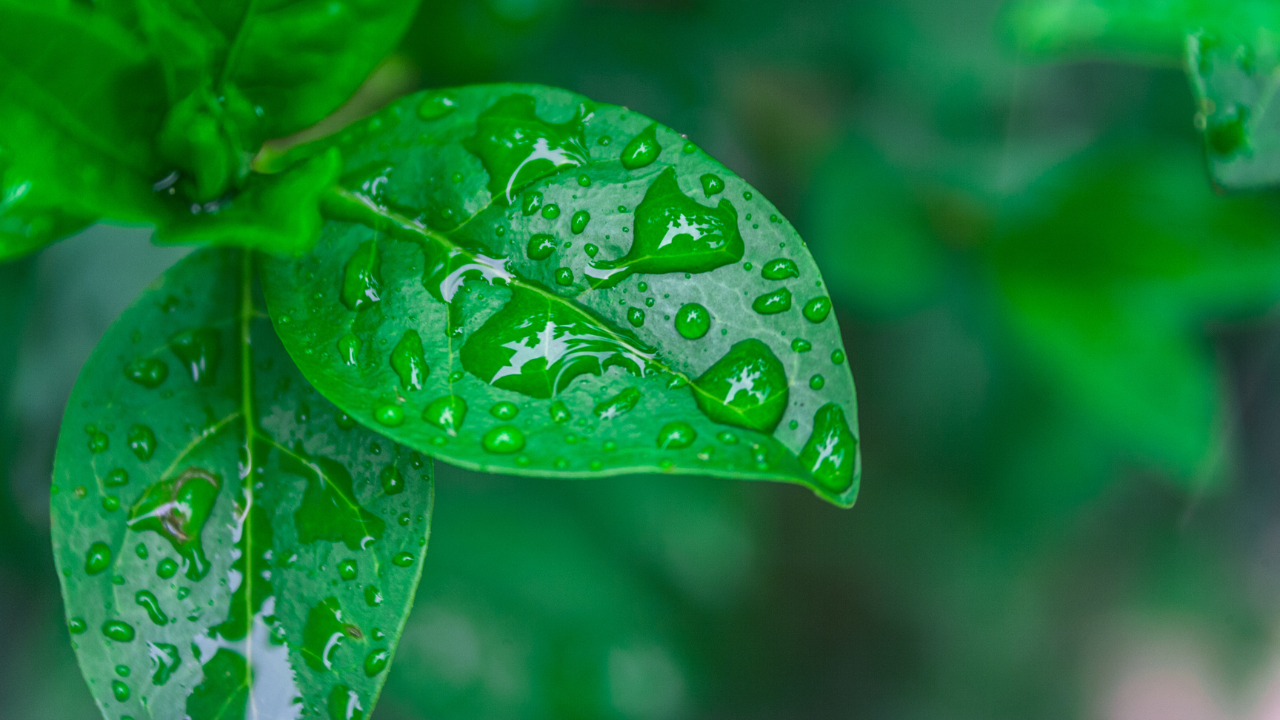
2.2 Soil Health and Growing Media Parameters
2.2.1 Soil Moisture
Soil moisture refers to the amount of water available in the soil for plant roots to absorb and dissolve nutrients.
If the soil is too wet, it can lead to waterlogging, oxygen deficiency, and root rot. If its too dry, plants suffer from dehydration and nutrient deficiencies. Smart soil moisture sensors help maintain the perfect balance, supporting optimal plant growth. Product link : Rika Soil Sensors
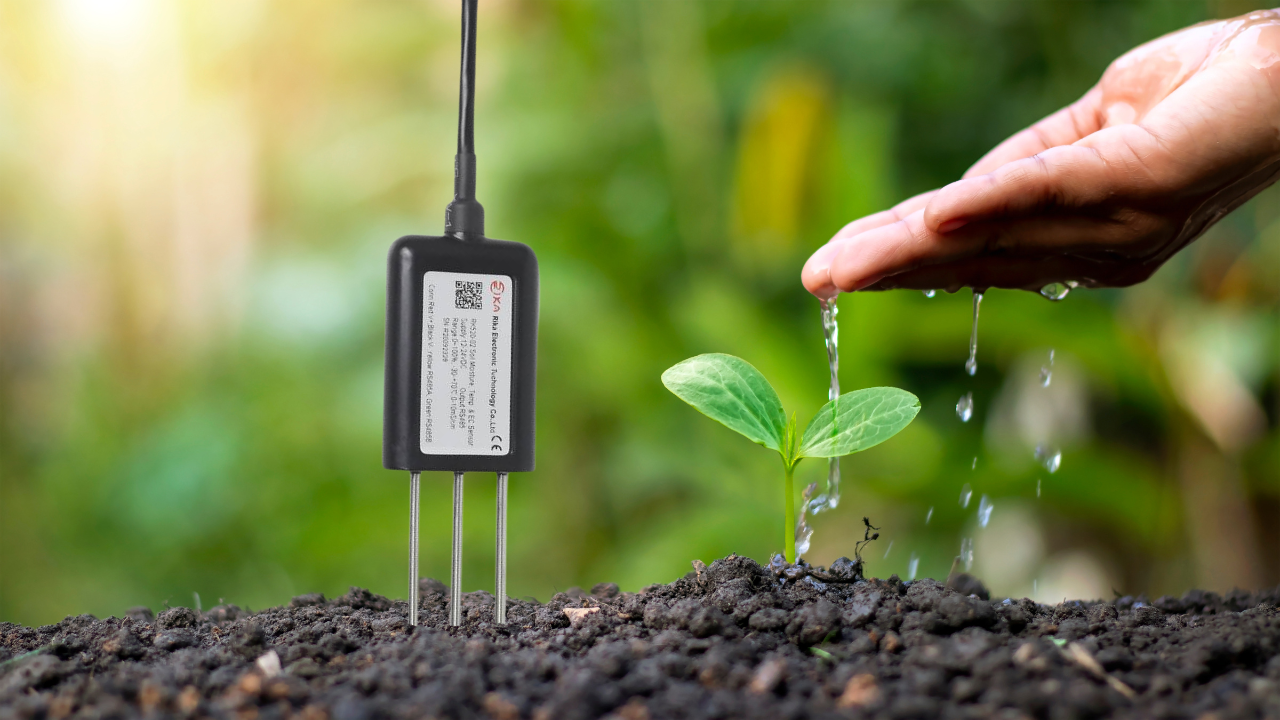
2.2.2 pH and EC
Two key indicators of soil health are pH and electrical conductivity (EC).
pH shows whether the soil is acidic or alkaline. Most crops prefer slightly acidic to neutral soil because it allows essential nutrients like nitrogen, potassium, and phosphorus to be easily absorbed.
EC indicates the salt concentration in the soil. High EC means too much salt, which can stress plants and harm growth. Low EC means nutrient deficiency.
Monitoring these parameters with sensors ensures plants receive balanced nutrition for healthy growth. Product link : pH/EC Sensor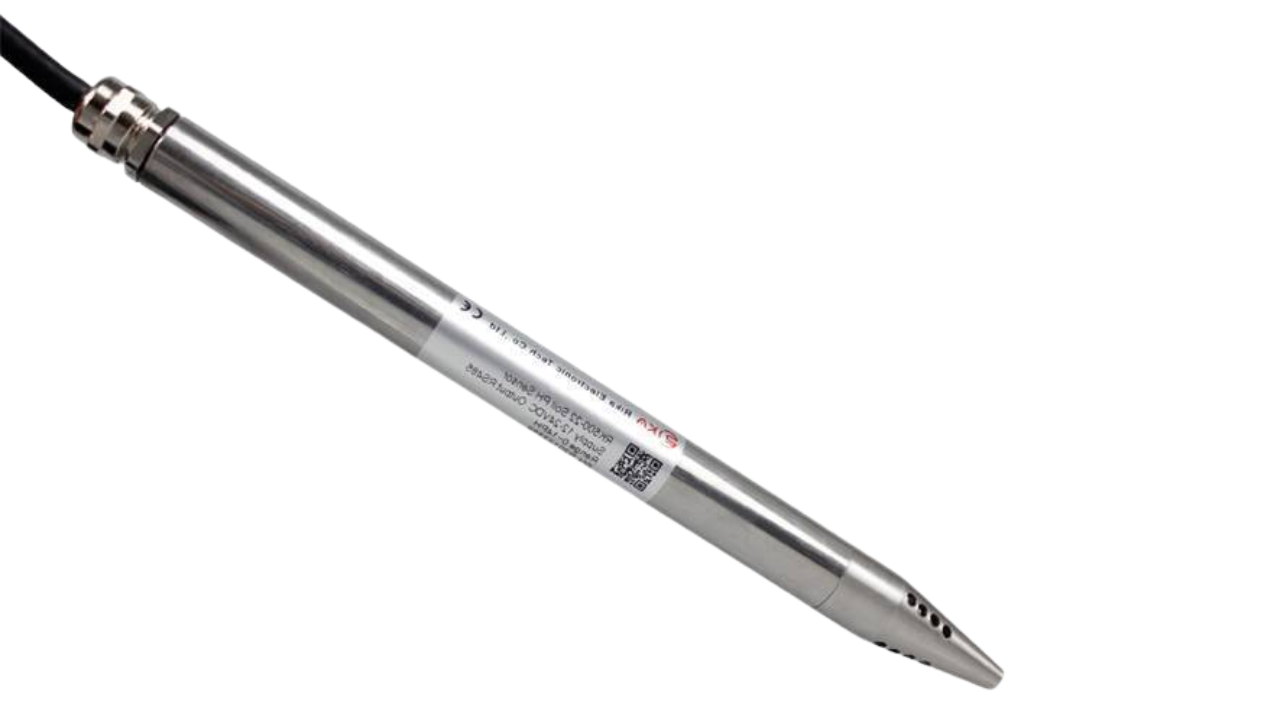
2.3 Light and Air Quality
2.3.1 Light Intensity / PAR
Plants need the right amount of light for photosynthesis. PAR (Photosynthetically Active Radiation) measures the light spectrum between 400700 nm, which is most effective for plant growth. Monitoring PAR ensures plants receive the optimal amount of usable light.

2.3.2 ระดับก๊าซ CO
2.3.2 CO Levels
CO levels in greenhouses must be monitored and controlled because CO is a key component of photosynthesis. In the presence of light, plants convert CO, water, and energy into glucose and oxygen. Maintaining proper CO levels is therefore essential for strong plant growth and high yields. Product link : Rika Air Quality Sensor

3. Why Sensors Are Essential for Plant Monitoring
3.1 Higher Yield and Better Quality
Sensors provide continuous data collection and real-time monitoring, enabling precise control of the greenhouse environment. This leads to healthier crops, better quality, and maximum yield.
Unlike manual monitoring, sensors ensure consistent conditions, which result in uniform plant size, color, texture, and taste. Data-driven decisions improve both productivity and quality.
3.2 Resource Optimization (Water, Energy, Nutrients)
Modern farming focuses on efficiency: using the right amount of water, energy, and nutrients at the right time.
In traditional farming, overuse of resources was common. Today, sensors reduce waste by preventing over-irrigation, over-fertilization, and unnecessary lighting or heating. This not only saves costs but also supports sustainable farming.
3.3 Early Detection of Stress and Disease
Detecting plant stress or disease early is crucial. Sensors help greenhouse owners:
Prevent diseases from spreading to healthy plants
Reduce crop loss
Lower treatment costs
Maintain consistent crop quality
With advanced sensor technology, greenhouses can take proactive measures and strengthen their operations.
4. Types of Greenhouse Sensors: A Complete Overview
4.1 Temperature Sensors (Thermistors, RTDs, Thermocouples)
Thermistors: Highly accurate (±0.10.5°C), fast response, and often used for air monitoring in greenhouses. Most use NTC (Negative Temperature Coefficient) thermistors, which decrease resistance as temperature rises.
RTDs: Extremely precise (±0.1°C or better) and stable, often used for soil temperature or sensitive crops. They are more expensive but reliable.
Thermocouples: Very durable, suitable for harsh or fluctuating conditions, with accuracy of ±12°C.
4.2 Humidity Sensors (Capacitive, Resistive, Psychrometers)
Capacitive Sensors: Most popular for greenhouses, fast response, highly accurate, and low maintenance.
Resistive Sensors: Cost-effective but less accurate.
Psychrometers: Very accurate but require frequent maintenance, typically used for research or calibration.
4.3 Soil Moisture Sensors (Capacitance, TDR, Gypsum Block)
Capacitance Sensors: Affordable and compact, commonly used in most greenhouses.
TDR (Time Domain Reflectometry): Highly accurate, even in salty soil conditions; ideal for commercial greenhouses.
Gypsum Blocks: Reliable for saline or coarse soils but slower response time.
4.4 pH and EC Sensors
pH Sensors: Measure soil acidity or alkalinity using a glass electrode sensitive to hydrogen ions.
EC Sensors: Measure nutrient levels by detecting how well the soil conducts electricity.
4.5 Light Sensors (PAR, Lux)
PAR Sensors: Measure the exact light spectrum used for photosynthesis.
Lux Sensors: Measure light as perceived by the human eye; often used as a supplement to PAR sensors.
4.6 CO Sensors (NDIR)
NDIR Sensors: Measure how much infrared light is absorbed by CO. They are durable, long-lasting, and require little maintenance.
5. Choosing the Best Sensors for Your Greenhouse
5.1 Prioritizing Sensors by Crop Needs
Choosing the right sensor depends on the crop and greenhouse technology level.
Leafy greens (e.g., spinach): Focus on humidity and light sensors.
Orchids: Humidity and CO monitoring are critical.
Low-tech greenhouses: Start with basic sensors (temperature, humidity, soil moisture).
High-tech or hydroponic systems: Add pH and EC sensors for nutrient control.
In short, investing in the right sensors ensures healthier plants and higher yields.
5.2 Factors to Consider
5.2.1 Accuracy and Reliability
Choose sensors that are accurate and proven. Wrong readings can lead to poor decisions, wasted resources, and damaged crops.
5.2.2 Durability and Environmental Resistance
Greenhouses can be tough environments. Sensors must handle high humidity, temperature changes, and occasional exposure to chemicals. Choose robust, weather-resistant sensors and maintain them regularly.
5.3 Smart Integration
Modern sensors dont just collect datathey also integrate with controllers, data loggers, and automation systems.
For example:
A CO sensor can control ventilation.
A temperature sensor can trigger heating or cooling systems.
These integrations allow real-time adjustments, identify trends, and optimize crop growth cycles. Smart farming is the future, and sensors are at the core of it.
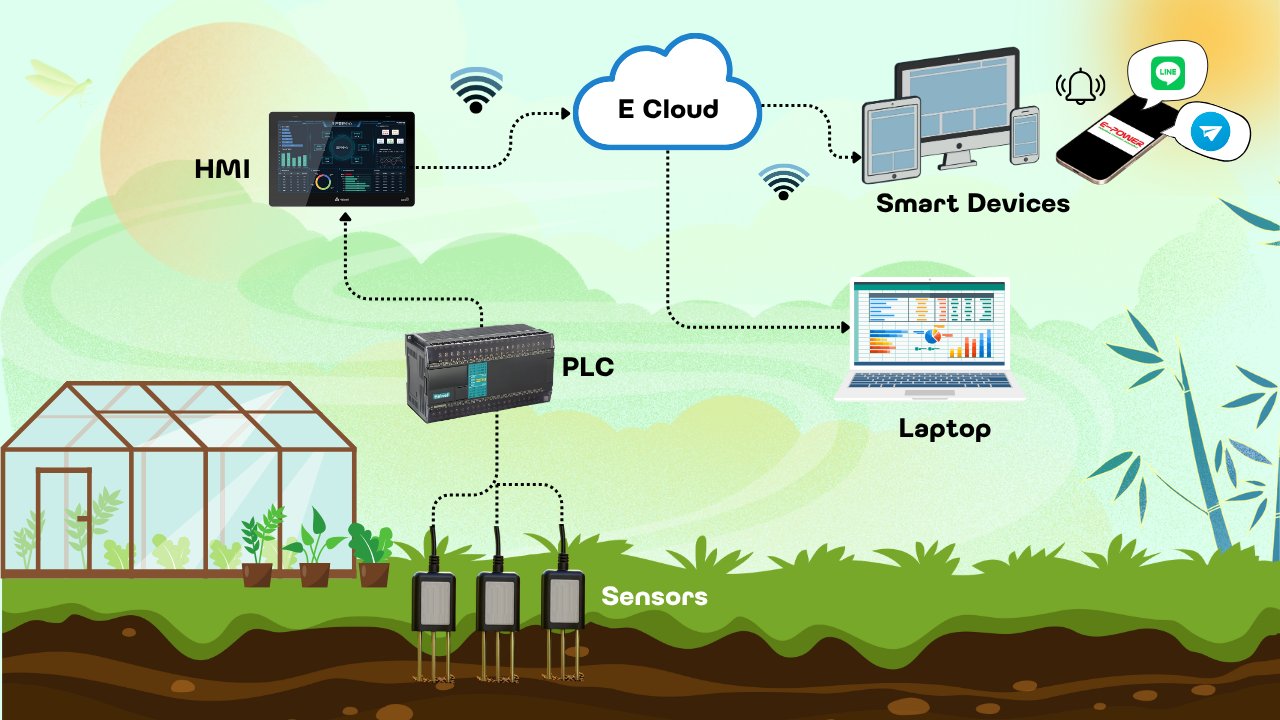
6. Conclusion: The Future of Precision Greenhouse Farming
In modern greenhouses, sensors are the nervous system that monitors and controls key parameters like temperature, humidity, light, soil moisture, pH, EC, and CO.
Greenhouse owners who invest in a complete sensor system gain a major competitive advantage: better crop quality, reduced waste, and data-driven decision-making. Precision farming is not just an upgradeits the future of agriculture.
FAQs
Q: What role does a CO sensor play in greenhouses?
A: Monitoring CO levels is crucial because CO is a key component of photosynthesis. Proper CO levels ensure healthy plant growth and higher yields.
Q: How often should greenhouse sensors be calibrated?
A: Calibration depends on the sensor type and manufacturer, but typically every 36 months is recommended.
Q: Are wireless sensors better than wired sensors?
A: Wireless sensors are easy to install and ideal for large greenhouses but require battery changes. Wired sensors are harder to install but provide uninterrupted data and lower maintenance.
Q: What is the main purpose of a greenhouse?
A: Greenhouses provide a controlled environment, protect plants from external threats, allow year-round production, and improve resource efficiency.
We would like to extend our full respect to the original source, [info@rikasensor.com]


